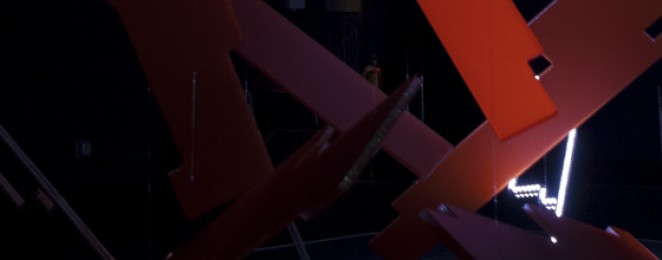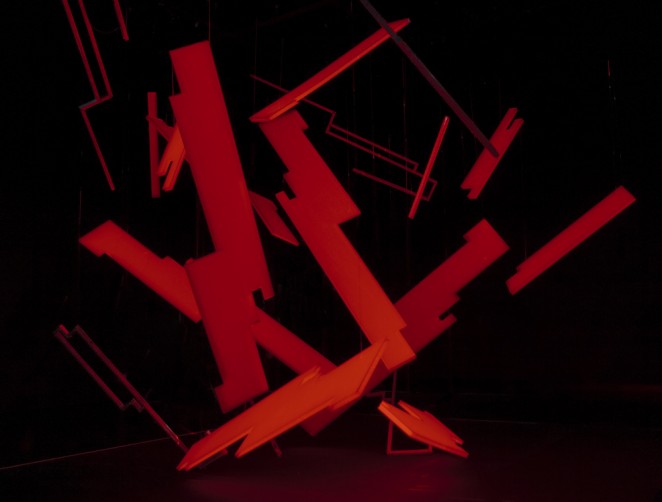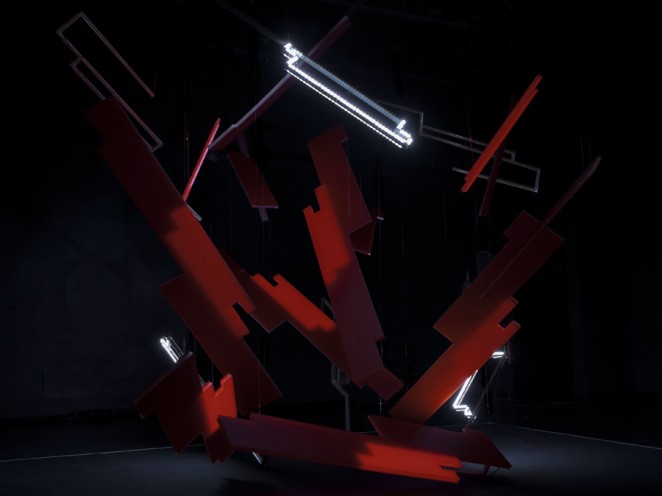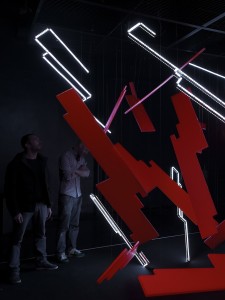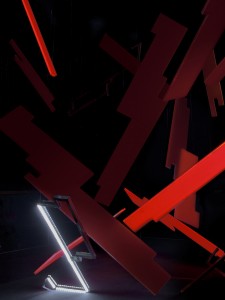WHITE ROADS IN THE RED MATRIX AT BIAN 2012
WHITE ROADS IN THE RED MATRIX AT BIAN 2012
Last June, I was invited to show my new installation “White Roads in the Red Matrix” for the first time, at BIAN (Biennial International Digital Arts), Montreal.
The event, organized by Elektra festival, aims to reveal the effervescence of the digital art in Quebec and the maturity of the discipline internationally. Other artists such as Carsten Nicolai, Herman Kolgen, Ryoji Ikeda, Robert Lepage, also presented their personal work which was mostly installations.
The piece I presented is a light and sound sculpture whose elements are suspended in mid-airspace, and fragmented in a space. This dynamic layout offers different points of view and perspective according to the position of the spectator.
The structure was in the center of the room, and filled a 13 m2 surface and a 3m height.
“White roads in the red matrix” is in continuation of my artistic commitment over the past few years, but this time with a more “structural” approach, as opposed to my work based on still or moving images, but again with the same focus of deconstruction. A selection of my deconstruction series can be found on my blog WYSI*not*YYG, while series based around the theme of time are visible on Deconstruction Time, Again.
While doing some research around the deconstruction theme, I had to create fragments, which would always be rectangles, the main geometrical shape I’ve been obsessed with for years, the core material of the work. But this time I wanted to have an even more radical approach.
The outcome of this research is a spread of fragments in space, a floating matrix animated in time by sound and light.
The installation is made of 14 elements of red semi-translucent Plexiglas and six aluminium structure with embedded LEDs.
These elements can be lit up independently, and synchronized with a sound design that brings the temporal dimension of the work. Thomas Vaquié worked on the sound design, and created two main sound ‘colors’ to reflect the each of the two materials’ singularity. The sound is then made of 44 different sounds, and the challenge was to create melodic and harmonious.combinations from these elements.
Part of the structure was projection mapped, and projectors were used to contrasts with the sharp lighting of LEDs, and the visuals were developped with VVVV. The software will allow future development of an interactive version of the piece.
Olivier Ratsi : design / Thomas Vaquié : sound design / Anthony Gouvrillon : software development / Julien Guinard : LED development
Thank you to Elektra team, Gilles Alvarez, Julien Taib, Cedric Huchet, Nicolas Rosette – Support by Arcadi, Théâtre de l’Agora and Stereolux.
Comments
Powered by Facebook Comments

